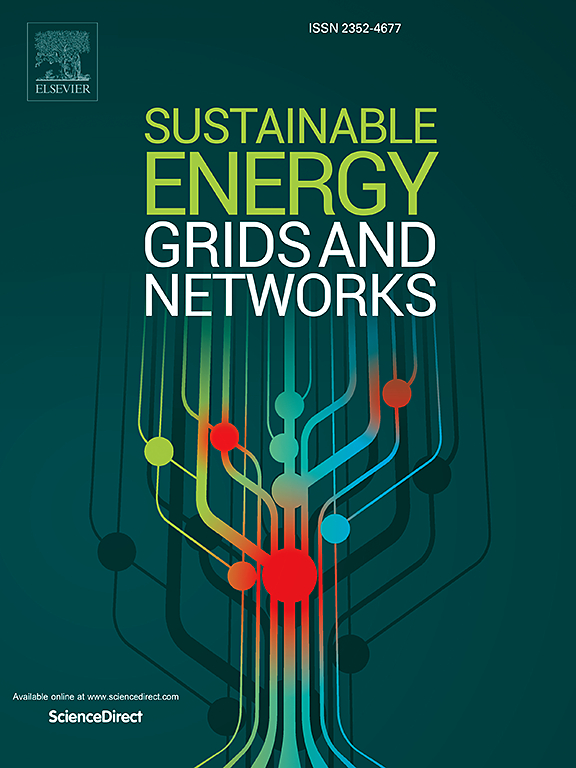Swarm electrification for Raqaypampa: Impact of different battery control setpoints on energy sharing in interconnected solar homes systems
IF 4.8
2区 工程技术
Q2 ENERGY & FUELS
引用次数: 0
Abstract
In rural electrification, decentralized systems have proven to bring fast, affordable, and sustainable electricity supply for the last mile of energy access. Especially, solar home systems (SHS) have lately increased in number and impact. Recently, a new concept promises even better utilization of SHS and the potential for higher access to electricity. This concept is found under the name of swarm electrification, also known as interconnected SHS, nanogrids, or decentralized DC systems in rural areas. This paper studies the benefits of such interconnected SHS for a case study in the indigenous rural Highlands of Bolivia, an area called Raqaypampa. Our study emphasizes analyzing the energy sharing setpoints for the decentralized battery control and how the choice of these values influences energy distribution in the community. We draw concepts of energy justice into our discussion to evaluate different combinations of battery state of charge setpoints. Our study finds four types of households in Raqaypampa based on their demand for electricity. The modeled and simulated results of a potential energy sharing through interconnected SHS reveal three outcomes for the households based on the battery state of charge setpoints: Outcome I — Improving households, Outcome II — Depending households, and Outcome III — Deteriorating households. We conclude that a common approach of e.g. minimization of total unmet demand alone will not necessarily lead to just energy distribution, and it is crucial to integrate discussions about justice and community goals into the design process from the beginning.
Raqaypampa 的蜂群电气化:不同电池控制设定值对互联太阳能住宅系统能源共享的影响
在农村电气化方面,分散式系统已被证明能够为最后一英里的能源供应提供快速、负担得起和可持续的电力。特别是,家用太阳能系统(SHS)的数量和影响最近都在增加。最近,一种新的概念有望更好地利用家用太阳能系统,并为更多人获得电力提供可能。这一概念被称为 "蜂群电气化",也被称为互联的家庭太阳能系统、纳米电网或农村地区的分散式直流系统。本文以玻利维亚原住民农村高地 Raqaypampa 地区为案例,研究了这种互联自助式住宅系统的好处。我们的研究重点是分析分散电池控制的能源共享设定值,以及这些值的选择如何影响社区的能源分配。我们在讨论中引入了能源公正的概念,以评估电池充电状态设定点的不同组合。我们的研究发现,拉卡伊潘帕有四种类型的家庭,其用电需求各不相同。根据电池充电状态设定点,通过互联的太阳能热水器进行潜在能源共享的建模和模拟结果显示了家庭的三种结果:结果 I - 改善型家庭,结果 II - 依赖型家庭,结果 III - 恶化型家庭。我们得出的结论是,仅采用未满足总需求最小化等普通方法并不一定能实现公正的能源分配,从一开始就将有关公正和社区目标的讨论纳入设计过程至关重要。
本文章由计算机程序翻译,如有差异,请以英文原文为准。
求助全文
约1分钟内获得全文
求助全文
来源期刊

Sustainable Energy Grids & Networks
Energy-Energy Engineering and Power Technology
CiteScore
7.90
自引率
13.00%
发文量
206
审稿时长
49 days
期刊介绍:
Sustainable Energy, Grids and Networks (SEGAN)is an international peer-reviewed publication for theoretical and applied research dealing with energy, information grids and power networks, including smart grids from super to micro grid scales. SEGAN welcomes papers describing fundamental advances in mathematical, statistical or computational methods with application to power and energy systems, as well as papers on applications, computation and modeling in the areas of electrical and energy systems with coupled information and communication technologies.
 求助内容:
求助内容: 应助结果提醒方式:
应助结果提醒方式:


